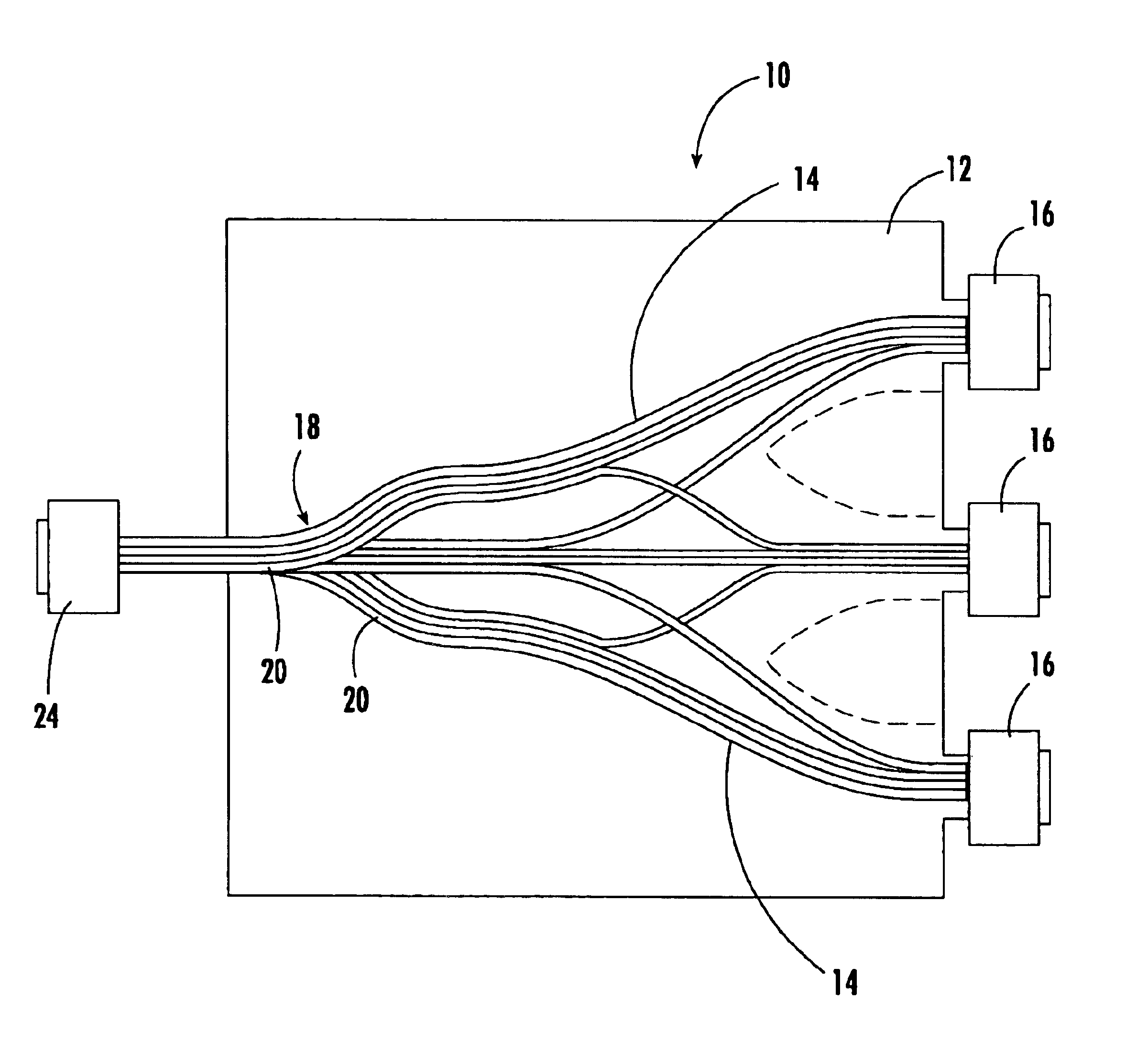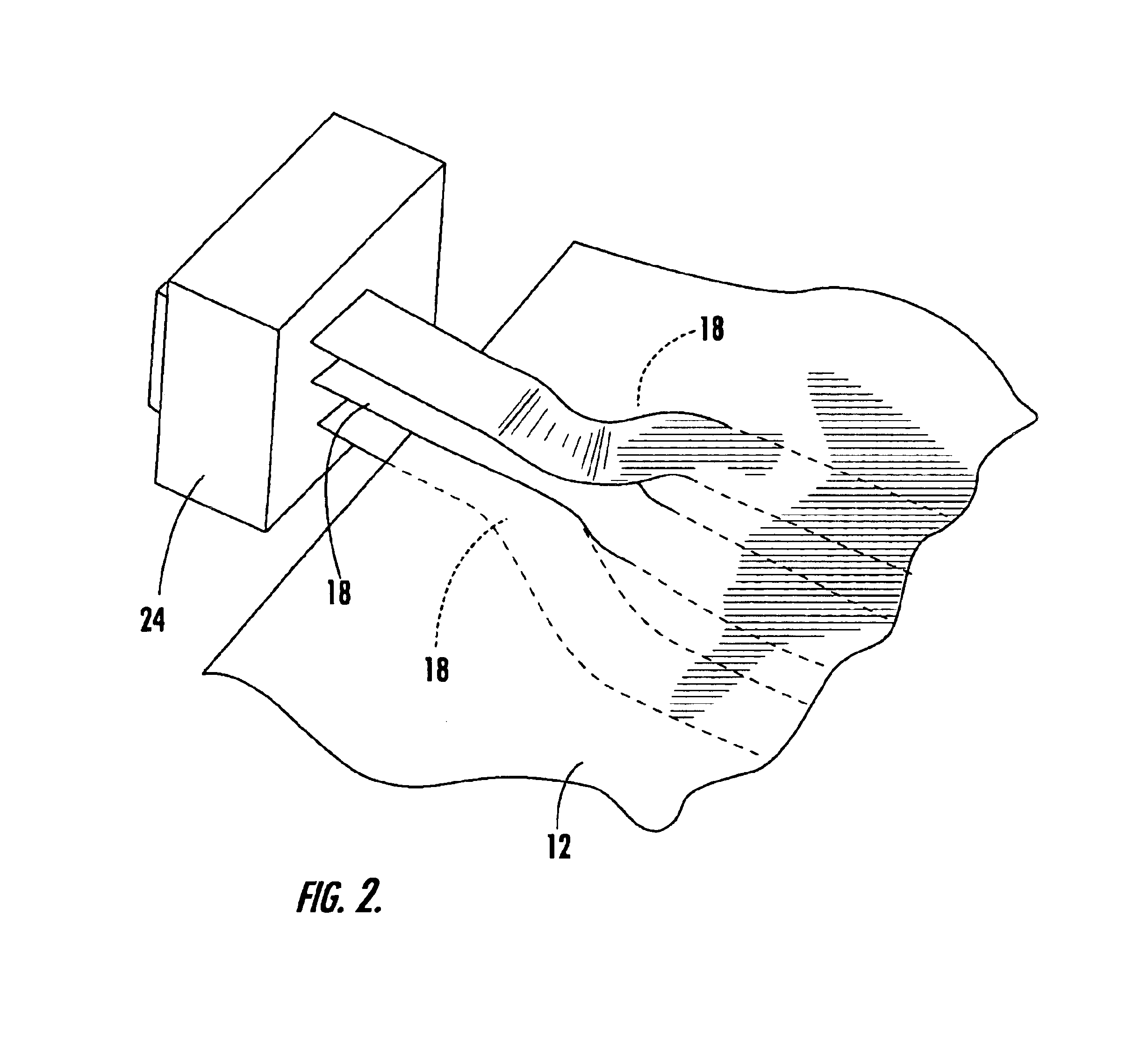Optical circuit having legs in a stacked configuration and an associated fabrication method
a technology of optical circuits and legs, applied in the direction of bundled fibre light guides, instruments, fibre mechanical structures, etc., can solve the problems of reducing the performance of flexible optical circuits, introducing attenuation and other deleterious effects, and increasing the length of optical fiber ribbons is oftentimes disadvantageous for fiber management, so as to reduce the stress to which optical fibers are subjected, and achieve the effect of eliminating the stress of optical fibers, without degrading the performance of flexibl
- Summary
- Abstract
- Description
- Claims
- Application Information
AI Technical Summary
Benefits of technology
Problems solved by technology
Method used
Image
Examples
Embodiment Construction
The present invention now will be described more fully hereinafter with reference to the accompanying drawings, in which preferred embodiments of the invention are shown. This invention may, however, be embodied in many different forms and should not be construed as limited to the embodiments set forth herein; rather, these embodiments are provided so that this disclosure will be thorough and complete, and will fully convey the scope of the invention to those skilled in the art. Like numbers refer to like elements throughout.
Referring now to FIG. 1, an optical circuit 10 according to one advantageous embodiment of the present invention is illustrated. The flexible optical circuit can be deployed in a variety of applications in order to route optical fibers in an organized and managed fashion. For example, the flexible optical circuit may permit a plurality of ribbons of optical fibers to be interconnected or cross-connected. As such, the flexible optical circuit may be utilized as a...
PUM
 Login to View More
Login to View More Abstract
Description
Claims
Application Information
 Login to View More
Login to View More - R&D
- Intellectual Property
- Life Sciences
- Materials
- Tech Scout
- Unparalleled Data Quality
- Higher Quality Content
- 60% Fewer Hallucinations
Browse by: Latest US Patents, China's latest patents, Technical Efficacy Thesaurus, Application Domain, Technology Topic, Popular Technical Reports.
© 2025 PatSnap. All rights reserved.Legal|Privacy policy|Modern Slavery Act Transparency Statement|Sitemap|About US| Contact US: help@patsnap.com



